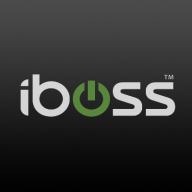


Armis and JumpCloud compete in the security and identity management spaces. Armis excels with its standout features and support, while JumpCloud's extensive capabilities may make it the better choice for those prioritizing advanced functionalities.
Features: Armis offers robust asset tracking and automated response, crucial for security. It specializes in IoT security, providing strong features in risk and compliance management, and asset visibility for devices like laptops, mobile phones, and servers. JumpCloud provides an integrated directory, identity, and device management, with single sign-on and extensive application integration for Office 365 and Google Workspace. It offers mobile device management, policy management, and seamless user onboarding and offboarding.
Room for Improvement: Armis could enhance OT operation impact reduction, scalability, and easier API-based integration. Improving device detection capabilities and seamless setup could also benefit. JumpCloud can improve on RMM capabilities, more advanced device management features, and expanded support for additional applications and policies.
Ease of Deployment and Customer Service: Armis is known for rapid deployment and strong customer service, minimizing downtime. Its agentless design eases implementation. JumpCloud’s cloud-based deployment offers flexibility but may require more adaptation time. It integrates well but takes longer for cloud adaptation compared to Armis.
Pricing and ROI: Armis has higher setup costs due to its IoT security specialization, offering high returns on security investments. JumpCloud offers competitive pricing, emphasizing value in wider IT management needs with favorable long-term ROI, appealing to businesses seeking comprehensive solutions.



| Company Size | Count |
|---|---|
| Small Business | 6 |
| Midsize Enterprise | 6 |
| Large Enterprise | 5 |
| Company Size | Count |
|---|---|
| Small Business | 4 |
| Large Enterprise | 6 |
| Company Size | Count |
|---|---|
| Small Business | 13 |
| Midsize Enterprise | 2 |
| Large Enterprise | 3 |
iboss offers a comprehensive security platform designed for diverse use cases such as web filtering, data loss protection, corporate proxy services, and URL filtering.
iboss integrates advanced features to address dynamic security needs, leveraging its strength in SASE, ZTNA, AI initiatives, and cloud integration, while ensuring seamless operations for remote work. It excels in historical forensics, malware protection, and flexible cloud deployments. Users benefit from comprehensive traffic scanning, robust malware detection, and PaaS capabilities that reduce hardware management. An intuitive admin console ensures efficient management with content filtering and low false positives. SSL decryption enhances security, while DLP protects data in AI conversations. Deployment is rapid and scalable, allowing effortless integration with emerging technologies.
What features does iboss offer?
What benefits and ROI should users consider?
iboss finds significant application in sectors such as education, where web filtering for K-12 is crucial, and in corporate environments requiring robust proxy services and URL filtering for network security. Its adaptability is essential in scenarios demanding flexible, decentralized security frameworks, particularly for remote work setups.
Armis is a comprehensive cybersecurity solution used for continuous monitoring and threat detection across IT and IoT devices. It excels in spotting vulnerabilities, managing device compliance, and tracking assets to enhance security protocols and network management. Key features include real-time threat detection, comprehensive visibility, and granular risk assessments. Armis boosts organizational productivity by streamlining workflows and enhancing operational accuracy.
JumpCloud offers efficient device management, single sign-on, and integration capabilities. It integrates seamlessly with Microsoft 365 and Google Workspace, streamlining user management across diverse environments.
JumpCloud delivers device, user, and application management across platforms like Windows, Mac, Linux, and cloud services such as AWS and Azure. Acting as a cloud-based directory, it facilitates single sign-on and identity access management, making it an attractive replacement for Active Directory and LDAP directories. Its policy management and centralized directory simplify user and device administration, offering a user-friendly interface with flexible access control and remote management. Organizations can experience streamlined onboarding and offboarding processes, robust authentication, and scalability. Despite being powerful, room for improvement is noted in alert capabilities, comprehensive MDM for Windows, multi-tenant features, and API reliability.
What are the key features of JumpCloud?Companies across industries utilize JumpCloud for comprehensive management of devices and user identities. It is especially beneficial in technology-driven sectors where centralized directory services replace traditional Active Directory and LDAP models. Organizations employing platforms like AWS and Azure find it essential for maintaining efficient and secure access management.
We monitor all Cyber Asset Attack Surface Management (CAASM) reviews to prevent fraudulent reviews and keep review quality high. We do not post reviews by company employees or direct competitors. We validate each review for authenticity via cross-reference with LinkedIn, and personal follow-up with the reviewer when necessary.